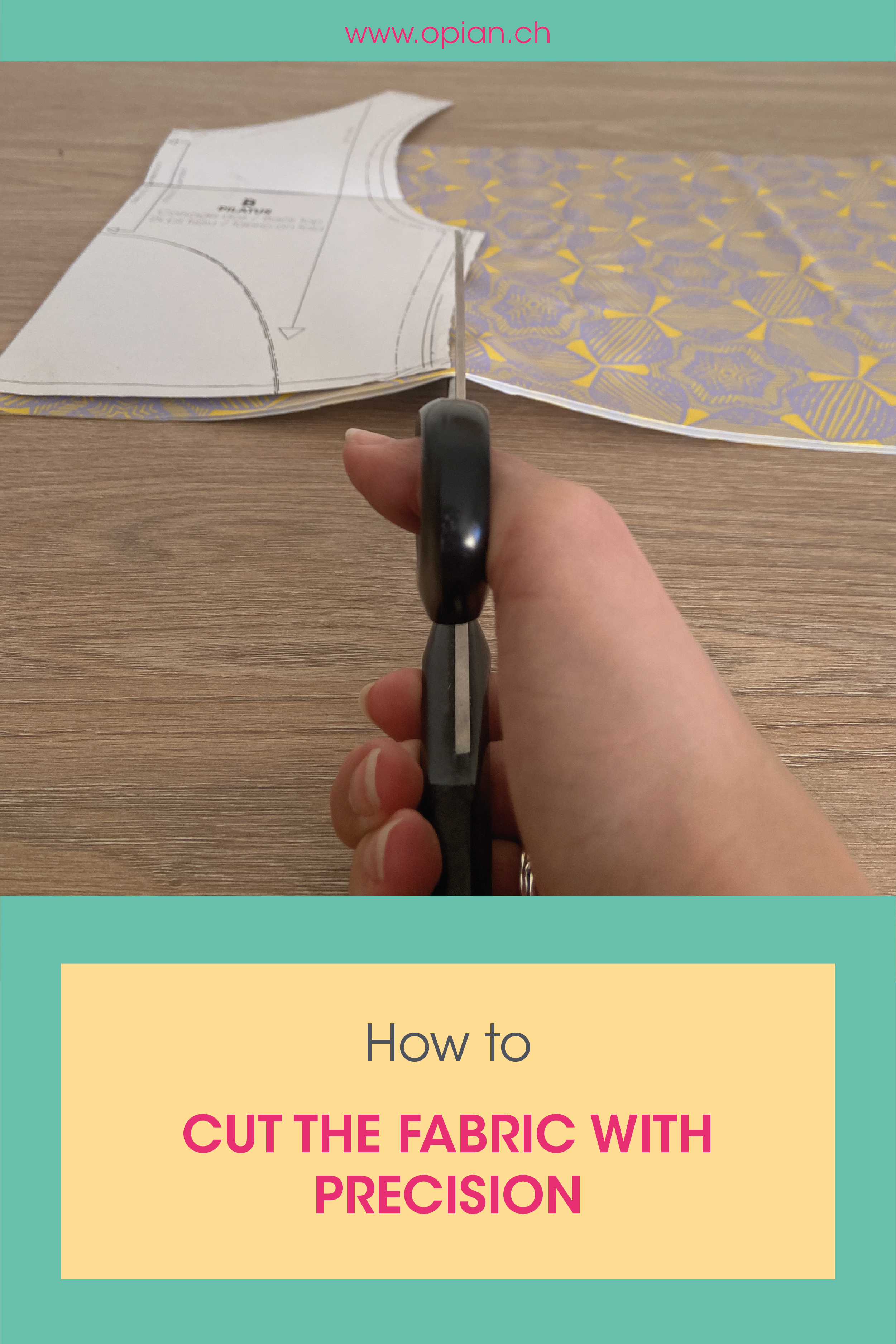Sewing tips | Cut the fabric with precision |
Published :
04/02/2023 17:43:44
Categories :
Sewing Tips
Before starting to sew your long-awaited sewing project, you have to go through cutting fabric. This is an important step for a garment that fits well and lasts a long time. This action is therefore not to be taken lightly, because the inaccuracy during the cut is found in the seam. Two millimetres here, two millimetres there and the seams do not match.
So here are some tips for cutting the fabric to perfection.

Wash the fabric
The first thing to do before cutting the fabric is to put it in the machine. It removes finishes, filth and above all shrinks the fabric, so no clothes are too small after the first wash! And a little note on the filth, I could witness with my own eyes where the rolls of fabrics were lying around in the factories before being cut into clothes, I can assure you that they (or commercial clothes) have to be washed before they are worn. I'm talking about mouse nests and everything that goes with it!
Iron the fabric
I cannot repeat it enough, ironing is the key to a well-sewn garment. It fixes the fabric once and for all and it allows the fabric to be laid flat without creases. In addition, you should always iron a fabric or garment inside out, because it damages it less.
Iron the pattern
To flatten a pattern, you can iron the paper with low heat. But beware of the tape if there is any, it cannot be not ironed.
Use scissors only for fabric
It is well known to sewists, fabric scissors are not used for anything other than fabric! Paper is prohibited!
Look for the grainline
If the fabric is not cut straight, it would be good to look for the grainline. To do this, follow the weft thread and cut along the entire width of the fabric. You can also pull and slip 2 or 3 weft threads to show the path of the grainline.
Don’t let the fabric hang from the table
The ideal is to lay the entire fabric on a flat surface, whether it is a table or a floor. If the fabric is larger than the table, put a chair at the end to hold the fabric or fold the excess to one side.
Lay the fabric flat
The most common method is to lay the fabric folded in half with one or two folds. So fold the fabric using a measuring tape to ensure the accuracy of the crease of the wrap grainline. Lay flat and check if the patterns match correctly.
Some fabrics are not square or are not printed square, that is, they are not at right angles and this is a defect. Depending on the offset, this can be annoying. For a print offset, you have to play around with it a little so that the patterns line up without twisting the fabric too much. For a woven fabric with an angle that is not 90°, you can pull it in the opposite angle along the entire length in order to make it straight. The fabric must be slightly damp, then iron it to fix it.
Gently pin the fabric
I recommend using headless pins to pin the pattern to the fabric. Indeed, it bubbles less without it and keeps the fabric flat.
With the pins, the fabric does not move, so the cut is more accurate.
Place the weights gently
Place weights gently on the fabric in strategic places without moving it, which is not always easy. When using weights, I don't recommend cutting with scissors but rather with a rotary cutter.
Sharpen your tools
Scissors that are not sharp will make cutting the fabric more difficult, risk snagging and shift the cut.
Scissors or rotary cutter should be sharpened regularly. You can do this with tools found in haberdasheries, but not all of them are effective. And occasionally, I bring my pair of scissors to be sharpened by a professional.
Cut precisely along the pattern
As mentioned before, 2 millimetres is a big gap in sewing, so you have to cut precisely along the edge of the pattern.
Cut straight with scissors
When cutting with the scissors, they must be perpendicular to the table so that the two layers of the fabric are the same size.
Cut with large scissor strokes
Open the scissors wide to cut straighter and make nice curves. Small movements will make bumps more easily.
Cut with a clean line with the rotary cutter
You need to use good pressure to cut with the rotary cutter to avoid having to go back and forth and chop the fabric.
Rotate around the cutting table
The ideal is to cut with the wrist always straight. This is not always easy when you have a table stuck to the wall, which is why, when you have used pins and the fabric allows it, you can gently turn the work to cut with the wrist straight. In this way, the pieces will be cut as good as possible.
That's a lot of tips on how to cut the fabric perfectly, but don't forget that this is an important step for a quality garment. And I hope you’ll find these tips helpful!

